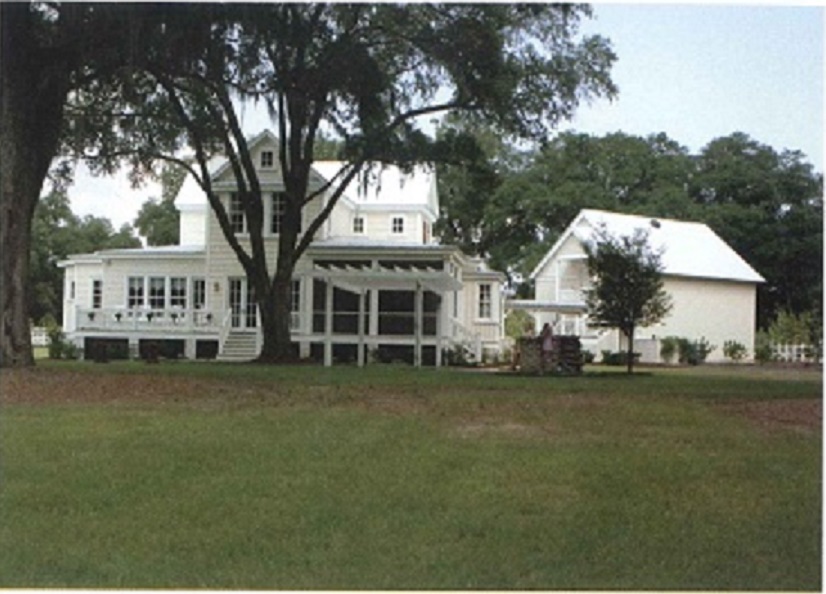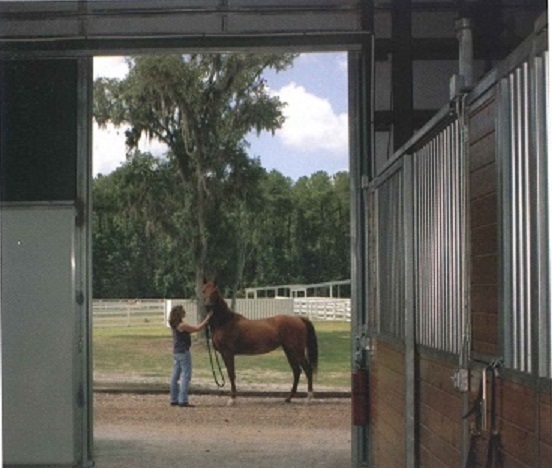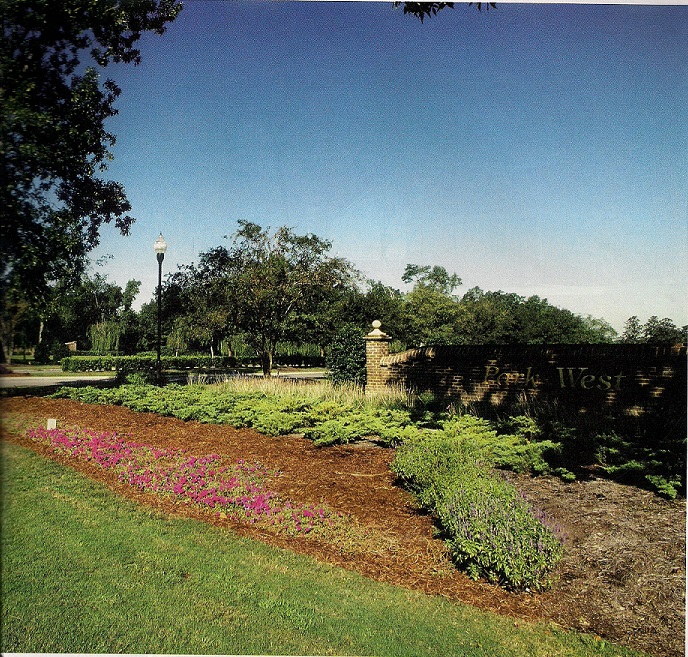Published in the September/October, 2003 issue
The winning combination of a homeowner with definite ideas, a cooperative architect and builder, and an exquisite seaside site makes this Debordieu retreat the epitome of comfortable coastal living. Text: Lee Ann Carter. Photography: Ted Borg. Interior Design: Faye Harrington Altman. Architecture: Steve Goggins. Landscaping: Patrick Pernell. Builder: Ron English.
A seaside community with plenty of amenities to keep two active teenagers busy attracted this family to Debordieu Colony. “I was looking for an area not too far from our primary home in North Carolina. I also wanted a place that was on the water and had lots of fun things to keep my children occupied,” the owner says..
While the design phase took six to nine months, the actual construction process for this 8,800 square-foot home, was approximately one year. Architect Steve Goggins, President of SGA Architecture says, “This owner brought definite ideas to the table, she wanted clean open living spaces, lots of natural building materials, and a sense of privacy and seclusion. It was demanding at times but in the end her ideas resulted in a better house.”
Ron English, Vice-President of Construction for Paragon Builders remarks, “This home was challenging through and through but it was also a wonderful experience. Anytime we ran into a design vs. construction problem, the owner was very receptive to corrective solutions.” For example an important part of the family are the dogs, A Boykin Spaniel and a Lhaso Apso. Since the dogs are crate trained, a space was needed for their kennels and accessories. English custom designed and built into the laundry room cabinetry dog kennels complete with cultured marble shower pans for easy cleaning. “These dog crates were a great idea and the dogs love them,” says the owner.
Designed as a techno/smart house, all lighting, heating and cooling, and security can be controlled via phone lines while either at Debordieu or from North Carolina. For example, returning for a sunset cruise, the boat lift dock lights can be activated with one cell phone call.
Since the owner wanted the home as secluded as possible, the entire building footprint was utilized. “We had several functional issues due to county restrictions and existing flood zones,” notes Goggans. “But through meticulous planning and working hand-in-hand with the builder and landscape architect we were able to give the owner everything she requested.”
With residences on each side, natural screens were created for privacy by planting low maintenance wax myrtles, Yaupon hollies, American hollies, and sable palms among the existing vegetation. Patrick Pernell, Landscape Architect with SGA Architecture observes, “When the plantings reach full maturity the home will be completely and naturally secluded from the main road and the neighbors.”
This owner desired a casually comfortable coastal second home with an emphasis on easy entertaining. From the main level rear covered porch overlooking the marsh, clearly defined areas flow from multi-level upper decks all merging together effortlessly. The zero water line pool designed by Pernell and built by Aqua Blue Pools frames an open gazebo. A Gloster teak table and chairs casually arranged in front of a wood burning fireplace are perfect for outdoor dining.
Presenting another design challenge was the owner’s request for a fully functional outdoor kitchen. Building materials were required to be durable as well as visually pleasing. Ipac wood, normally an outdoor floor decking material was used in constructing the kitchen cabinetry. Stainless steel appliances include an icemaker, dishwasher, and refrigerator along with a Viking grill, wok, and warming drawer. Again, for durability, custom outdoor lighting fixtures were fashioned with powder-coated stainless steel shades.
A screened outdoor dining area is easily accessed from both the interior and patio kitchens. Old fashioned rocking chairs are the perfect spot for enjoying the water views.
Clad in Eastern cedar white shaker siding, accented with hand cast brick, and using traditional Lowcountry staircases, Googans describes the overall home design as eclectic shingle style.
In the two-story open foyer, the focal point is a circa 1825 pine tri-sliding glass buffet, complete with the original glass. Originally in one of the owner’s previous homes, designer Faye Harrington Altman, owner of Harrington Altman Interiors remarks, “It was a given that this piece would be in the Debordieu home. It was one of the first antiques I ever found for the owner and when we started planning this home that was one of her first questions, “Where is the pine piece going?The tri-level main staircase located to the right between the entry foyer and main living area helps to create a unique visual effect along with maintaining a clean uncluttered sight axis from the front door to the rear tidal creek. An additional reason for the unusual location of the staircase has to do with golf carts. Since golf carts are a main mode of transportation on Debordieu, it was necessary that an area be created for cart storage. Requiring only half as much room as a regular garage bay, Goggans finished the area in front of the golf cart bay as the garage stairwell. In keeping with the owner’s request for open space it was a natural progression for the additional stair levels to be constructed in the same area. Goggans says, “These floating stairs offer a special dynamic articulation.”
An antique hand-carved pond yacht circa late 1800’s is prominently displayed on the custom knotty pine mantel. Sanford upholstered sofas and chairs in soothing sages and rusts frame the cozy fireplace.
Entering the well-appointed living room with its two-story dropped beam poplar ceiling, the continuity of theme and materials is evident from the custom designed crown cove molding used throughout the home to the bow front of the interior second level balcony. This bow front, a subtle nautical reference, is repeated on the exterior rear porches. Honey finished heart of pine flooring blends perfectly with the knotty pine cabinetry designed by Classic Touch and lends a warm glow to the soft pate wall color used in the main living areas. “I really like knotty pine, it adds such a cozy feeling to a room, ” the owner says. “In fact, some of the boards weren’t knotty enough, so we had additional knots faux-painted.” Bill Blakely, owner of Classic Touch comments, “I was lucky to work with a client who allowed us to be so creative.” This project worked so well because of the tremendous amount of communication between all parties involved.” Subtle rust, sage, and olive Stanford upholstered sofas and chairs are highlighted with soft gold. Occasional tables were chosen for size and placement. Mingling antiques with more conventional pieces, as seen in the antique trunks resting in front of the fireplace, helps to create a sense of permanence sometimes hard to achieve in a new residence. The owner declares, “Faye is awesome! I didn’t really know until I started looking at fabrics what I wanted. Faye was able to take the colors I kept coming back to and tie everything together!”
Window treatments from Old World Weavers frame the living room French doors. Custom cove molding between the second level wall of windows, living room French doors, and transoms add a unique visual effect.
Designed with a user-friendly flow for entertaining, the breakfast room and dining room are separated by a functional and stylish kitchen. Knotty pine cabinetry, again designed by Classic Touch, is topped with Uba Tuba granite and a slate backsplash. The Uba Tuba granite chosen has a slightly different coloration than most Uba Tuba and only four slabs were available. “That made the job a bit tougher; there wasn’t much room for error,” Says Altman. Travertine was selected for the center island. All these different textures create a unique look and work well together.
The breakfast room is reminiscent of one in an English country estate with varying shades of rust, sage, gold and khaki found in the Freemark chair seats and Schumacher window treatments.
The main level guest suite is painted a relaxing shade of goldenrod, with bedding and window treatments by Old World Weavers.
The breakfast room, kitchen, and dining room blend varying shades of black, gold, sage, khaki, and rust in the wallpaper, window treatments, and chair fabrics. Lee Jofa and Schumacher fabrics cover the dining room chairs and highlight the color palette of the Thibaut window treatments and cottage green walls. The rest of the main floor is home to a guest master suite and an additional guestroom.
A subtle nautical theme carried throughout the home is seen in the bow-shaped second floor interior balcony.
The master suite soaking tub rests on terra cotta porcelain slate.
On the second level are the children’s suites, their entertainment room containing a computer center, the owner’s study complete with a fireplace trimmed out with the same cove molding seen throughout the home, and the primary master suite. This master suite includes a fireplace, his and her dressing areas, double vanities, and serves up a spectacular view of the north Inlet.
The third level was designed for entertaining! A study/media room decorated completely in knotty pine raised paneling includes three sets of French doors, again knotty pine faux-finished, and a private balcony. Located at opposite ends, under the room eaves, are the gameroom and a complete home gym. English mentions, “The owner knew exactly where she wanted the exercise equipment located. While this room was being roughed in we were able to run additional HVAC ducts over the treadmill and stationary bicycle.”
Top left: Two hand carved pine Arte De Mexico chandeliers are antique finished to blend with the heart of pine floors and knotty pine cabinetry. Top right: From the spectacular rooftop deck, the view is unhindered and far-reaching – all the way to the Atlantic Ocean! Bottom left: An antique wrought iron gate has found new life as an objet d’art wall hanging. Bottom right: Designed for entertaining, the rear patio has a fully functional outdoor kitchen dining gazebo, and rimless pool.
Inside the third floor elevator alcove, a staircase leads to the spectacular rooftop deck. Goggans had originally envisioned a cupola leading to the roof. When height restrictions wouldn’t allow its construction, he had to do some creative thinking in order to gain roof access. Goggans designed a conventional staircase leading up to a stainless steel roof hatch. Push one button and the motorized hatch rises up and access to the roof deck is gained. With an Atlantic Ocean view, comfortable cast iron chairs and ottomans by Pompeii, a surround sound stereo system, discreet outdoor lighting, and easy access to the third floor powder room and wet bar, it’s clear to see why once the idea of a roof top deck was discussed it had to become reality.
This Debordieu dream home is a prime example of what can be accomplished when everyone involved is open and receptive to overcoming the challenges custom home building brings to the table. This owner and her family have certainly found their coastal comfort here.







































